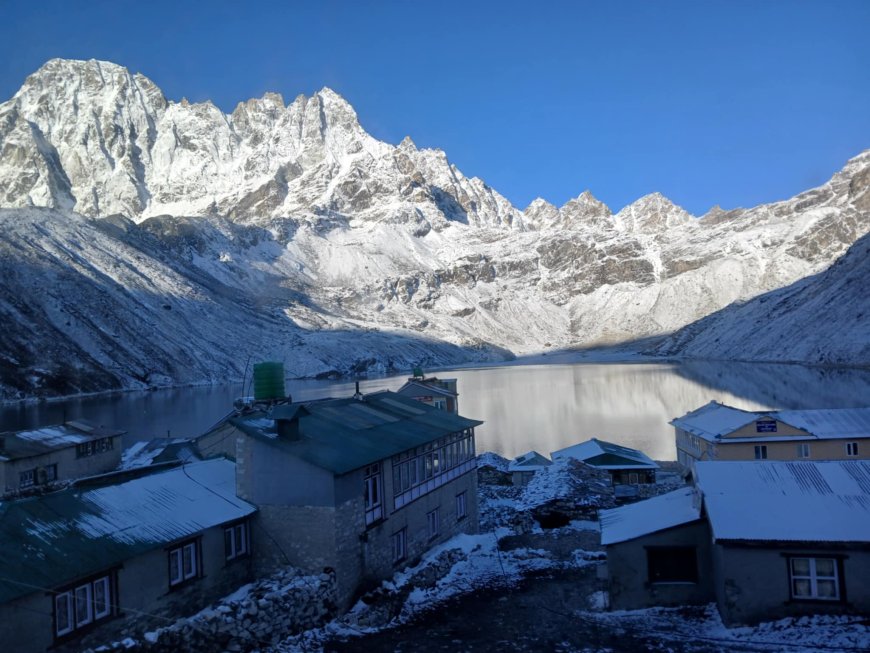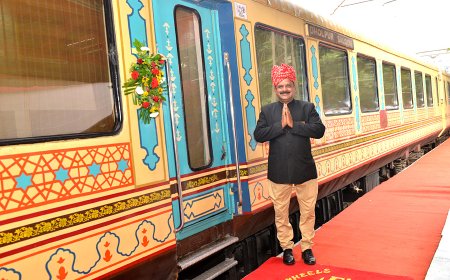How to Recover Quickly After Your Everest Base Camp Achievement
Explore Nepal's Himalayas with the Everest Base Camp trek — a bucket list experience.

Recovering well after theEverest Base Camp trek is key to getting your strength back and feeling good overall. The trek puts your body through a lot, from dealing with high-altitude stress to tired muscles and dehydration. Taking time to recover can help you bounce back quicker and lower the chance of getting hurt or sick afterward.
First up, rehydration is crucial. Being at high altitude can easily make you dehydrated, so drink lots of water and fluids with electrolytes to replace what youve lost. Eating well matters too; focus on balanced meals with proteins, healthy fats, and carbs to help your muscles heal and refill your energy. Dont forget to add fruits and veggies packed with antioxidants to tackle any inflammation from all that exercise.
Rest is just as important. After days of tough hiking, your body needs time to recover, so aim for good sleep and try to avoid heavy activities for at least a week. Gentle stretching and light walking can help keep the blood flowing and ease any stiffness without pushing yourself too hard.
Mental recovery is important as well. The trek can wear you out mentally, so take time to think about what youve achieved and deal with any lingering stress or fatigue. Connecting with others who trekked with you or sharing your experience can help.
By following these recovery tips, you'll find it easier to get back into your routine and enjoy the health benefits from your amazing Everest Base Camp adventure. Taking care of yourself after the trek will keep both your body and mind strong for whatever comes next.
The Physical Impact of the Everest Base Camp Trek
Trekking to Everest Base Camp takes a toll on your body. The high altitude can make it hard to breathe, lead to sore muscles, and cause dehydration that might stick around even after youre done. Its important to understand these effects so you can recover properly. Your heart, muscles, and immune system need time to heal. Knowing you might feel sore and tired afterwards helps you take care of yourself. By recognizing what your body goes through, you can avoid long-lasting issues and get back to feeling great after your trek.
The Importance of Rehydration After the Trek
Rehydrating after the trek is super important. When you hike at high altitudes, you lose a lot of fluids through sweat and heavy breathing, which can lead to dehydration. Drinking lots of water helps get those important electrolytes back and keeps your kidneys and muscles functioning well. You can also try drinks with electrolytes or natural options like coconut water to bring back minerals. Staying hydrated helps clear out toxins and improves blood flow, which can speed up muscle recovery. Making hydration a priority after the trek boosts your energy, eases headaches, and supports your overall health during recovery.
Balanced Nutrition for Muscle Recovery
What you eat plays a big part in how fast you recover after the trek. A balanced diet with plenty of protein helps repair your muscles and rebuild strength. Eating complex carbs replenishes your energy stores, while healthy fats can cut down on inflammation. Loading up on fruits and veggies that are high in antioxidants helps combat the stress your body faces at high altitudes. Vitamins like C and E, plus minerals like zinc and iron, can boost your immune system and aid healing. Eating regular, healthy meals gives your body the fuel it needs to bounce back and hold onto the fitness you gained on the trek.
The Role of Rest and Quality Sleep in Recovery
After you finish the trek, getting enough rest and quality sleep is key to recovering quickly. Sleep helps your muscles mend, balances hormones, and gives your nervous system a chance to reset after all that hard work. Try to get 7-9 hours of solid sleep each night and set up a relaxing nightly routine. Stay away from caffeine and screens before bed to improve your sleep quality. Taking rest days with light activity also allows your joints and tissues to heal. Focusing on sleep and rest speeds up your recovery, cuts down on fatigue, and gets you back on track for everyday life after your trek.
Gentle Stretching and Movement Post-Trek
Incorporating some gentle stretching and light movement after your trek can really help you recover. Stretching can ease muscle tightness and boost blood flow, helping your body clear out waste from all the hard work. Activities like yoga, walking, or swimming can improve flexibility and keep your joints moving without pushing your tired muscles too hard. Avoid hitting the gym with intense workouts right away to lower your risk of injury. Gentle movement also helps you relax mentally and keeps you from feeling sluggish after the trek. A routine of low-impact exercise can help you regain your strength and stay active as you recover.
Dealing with Post-Trek Mental Fatigue and Stress
Trekking to Everest Base Camp can wear you out mentally, even when your body feels fine. It's important to handle this mental exhaustion to feel fully back to normal. Trying things like mindfulness meditation, deep breathing, and journaling can help you sort through your feelings and experiences. Chatting with fellow trekkers or loved ones can offer some emotional support and help you feel less alone. Also, make sure to carve out some downtime and do relaxing things like reading or going for walks in nature to recharge your mind. Taking care of your mental state helps you enjoy your accomplishment and stay balanced after such an intense trek.
Benefits of Massage and Physiotherapy After Trekking
Getting a massage or seeing a physiotherapist can speed up your recovery after trekking to Everest Base Camp. A good massage can help ease muscle soreness, get your blood flowing, and relieve any tension in tired muscles. Physiotherapy can tackle any joint pain or small injuries you might have picked up, giving you focused care to help you heal. Techniques like deep tissue massage and stretching can improve your flexibility and reduce stiffness as your body gets back to normal. Regular sessions during recovery not only help you bounce back quicker but also prevent any long-term aches and pains.
Importance of Easing Back Into Exercise
After finishing the Everest Base Camp trek, its easy to want to jump back into intense workouts, but that can lead to injuries or burnout. Gradually easing back into exercise is the best way to recover safely. Start with low-impact activities like walking, swimming, or gentle yoga to help rebuild your stamina and flexibility. Gradually raise the intensity and duration of your workouts, listening closely to what your body tells you. Steer clear of heavy lifting or tough cardio until youre fully recovered. This slow approach helps repair your muscles, rebuild your endurance, and keeps you from facing setbacks.
Staying Hydrated and Detoxing
Keeping up with hydration after your trek is key for helping your body detox after all that hard work at high altitude. Drinking plenty of water flushes out toxins that may have built up during your trek. Herbal teas like ginger or dandelion are also great for helping with detox and reducing inflammation. Try to avoid too much caffeine and alcohol, which can dehydrate you. Eating foods high in fiber supports digestive health, too. All these hydration and detox tips help your body repair itself, lower inflammation, and boost your immune system, making your recovery smoother.
Planning Your Next Adventure After Recovery
Once youve fully recovered from the Everest Base Camp trek, thinking about your next adventure can keep you excited and fit. Take some time to reflect on what you gained from your trek to set practical goals for your next outing. Whether you want to try another tough climb or a different outdoor activity, good planning will involve physical training, getting the right gear, and preparing mentally. Setting new goals helps you stay active and gives you purpose after the trek. Just make sure to give your body enough time to recover before you dive into training. This balanced method helps you keep growing as an adventurer while protecting your health for future success.
How to Get Back from Everest Base Camp
Getting back from Everest Base Camp is pretty straightforward. Most people walk back to Lukla, which generally takes about 3 to 5 days. The time can vary depending on how fast you go and the weather. Once you reach Lukla, you can catch a quick flight back to Kathmandu. Its a popular choice since the views from the plane are amazing and it saves time. Some folks like to take a longer way back to check out more villages or enjoy easier hikes at a lower altitude. Just be sure to plan for possible flight delays because of the weather. After you start your descent, make sure to rest and drink plenty of water. Knowing how to get back makes the transition from high altitudes to regular life a lot smoother.
What to Do After the Everest Base Camp Trek
Once you've finished the Everest Base Camp trek, its time to focus on recovery. Start by drinking lots of water and eating healthy meals to regain your energy. Give your body some time to rest and heal. Many trekkers like to explore Kathmandu or visit nearby cultural spots to relax a bit. This can also be a great time to jot down your thoughts about the experience, which can help you process everything. If you felt any altitude sickness or had injuries, its a good idea to see a doctor. Slowly ease back into your regular exercise routine to keep up your fitness. Taking care of yourself after the trek helps you make the most of your unforgettable Himalayan adventure.
How to Prepare for the Everest Base Camp Climb
Getting ready for the Everest Base Camp climb calls for some serious training, the right gear, and a solid mindset. Start by building your endurance with activities like hiking, running, or cycling several times a week. Its also good to work on strength training for your legs, core, and back to help you manage those tough uphill climbs and heavy bags. Try to do some hikes at higher altitudes before your trip if you can. Make sure you have quality trekking gear for the changing weather, including layers of clothing, good boots, and a comfortable backpack. Mentally, focus on learning about altitude sickness, weather issues, and the logistics of the trek to set yourself up for success. Getting ready well helps keep you safe and makes the trek more enjoyable.
What Fitness Is Needed for Everest Base Camp?
To trek to Everest Base Camp, you need to be in moderate to high shape, focusing on endurance, strength, and flexibility. Good cardiovascular health is key for those long days of walking uphill in thin air, and you can build that with aerobic exercises like running, cycling, or swimming. Doing strength training, especially for your legs and core, will help with balance and stamina on rough terrain. Flexibility exercises are important too, as they lower the chance of injury and improve your movement. Practice hiking with a weighted backpack to mimic trek conditions and build your endurance. Aim to train consistently for 8-12 weeks before the trip, slowly ramping up the intensity and altitude youre used to. Being prepared means more enjoyment and less tiredness on your amazing journey.
Wrap Up
Completing the Everest Base Camp trek is a big deal, and it takes solid prep, fitness, and mental strength. Knowing how to safely get back, what to do after, and how to train helps make your experience rewarding. Staying in good shape before and after the trek means you get more out of it and lowers the chances of altitude sickness or injury. With the right mindset, your Everest Base Camp adventure turns into not just a walk through stunning scenery but a personal milestone. Embrace every stagegetting ready, trekking, recovering, and reflectingto fully soak in the beauty of the Himalayas and your amazing achievement.







































